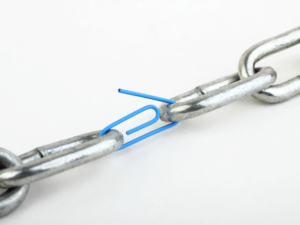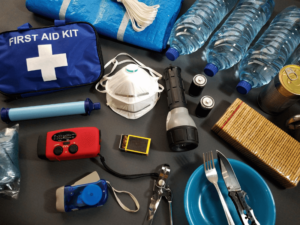Grid Failure Preparation: Best Practices For Securing Your Business
Let’s face it, we all take electricity for granted. It’s like that reliable friend who is always there for us, until one day they’re not. And when the lights go out, we sure do miss them. The truth is, the world as we know it would crumble without a functioning power grid. So, while we may not like to think about it, preparing for a power outage is crucial.
Be it an intentional attack or the result of a natural disaster, our power grid isn’t invincible. Knowing that creates questions like what can be done to secure the U.S. power grid? And how can businesses work on power grid failure preparation? To help you answer the latter question, we wanted to share some best practices for ensuring your business functions optimally should the power grid fail.
Grid Failure Preparation 101: Anticipate a Failure

The best thing any business can do is to anticipate a power failure coming. Don’t assume that one isn’t going to happen or be oblivious to the threat; that’s the worst thing you can do. For instance, if a storm is coming or another reason to think that a power grid failure could happen, let your employees know so that they’re not in the dark – no pun intended. Of course, you can’t predict all power failures, which is why they pose such a problem to businesses. But this is why you should approach every day as if a failure will hit and begin working towards grid failure preparation.
Understand Your Weaknesses
 Once you’ve acknowledged the possibility of a power grid failure, the next step is fully understanding what a power failure would entail. Take stock of all daily business operations, and consider the possible short-term and long-term consequences of power failure. What would you be able to do and not do during a power failure? Would it be possible to process orders or even communicate with customers? Which aspects of your production line could continue to operate?
Once you’ve acknowledged the possibility of a power grid failure, the next step is fully understanding what a power failure would entail. Take stock of all daily business operations, and consider the possible short-term and long-term consequences of power failure. What would you be able to do and not do during a power failure? Would it be possible to process orders or even communicate with customers? Which aspects of your production line could continue to operate?
Even if you can’t always anticipate when a power failure will occur, don’t let yourself get caught off guard. If you understand in advance how a power grid failure will change things and where it’ll cause the most problems, it’ll be easier to react when it happens and secure your grid failure preparation tactics.
Inspect Your Readiness
Understanding what will happen to your business operations is only half the job. Now, it’s time to inspect your readiness for such an event. Try performing a self-audit that replicates what would happen and what you would need during a power failure. For instance, is there a backup system in place for safety and emergency systems? Are there exit signs powered by batteries that will still light up if there’s no power? Will your sprinklers and smoke detectors continue to work without power?
Likewise, does your business have proper surge protection for all of your electrical equipment? Remember, it’s not just about being able to continue normal business operations in the wake of a power grid failure. There could be damage to company-owned computers and other equipment during a sudden power failure, so ensure you have enough protection in that regard as well.
Put a Plan in Place

Understanding and testing are all and well, but it doesn’t mean anything if you don’t have an emergency plan in place for how everyone should respond. What should employees do if a power outage occurs? Will they have specific tasks they need to perform? Do employees know to avoid elevators, power lines, and any electrical equipment in the workplace?
Once you know how a power outage will impact your business, it’s possible to create a plan for how employees should respond. The next step is ensuring you teach employees this plan so they can respond if there is a sudden power failure.
Keep Key Devices Charged
As mentioned, a part of being prepared for a power grid failure is understanding that it can happen at any time and being able to anticipate the unexpected. Those truly anticipating an unexpected emergency, will ensure their mobile phones and other critical devices are always fully charged. If not used for business purposes, these devices should be plugged in and powered up, as you can forget about doing it after a grid failure.
Remember, if a power failure happens out of the blue, drained devices won’t do you any good. In fact, it’s a good idea for a business to keep at least one phone, tablet, or any other device off to the side and fully charged at all times. That way, there will always be a charged device ready to go. Of course, you won’t be able to recharge that device until the power is back on, so be careful how you use it while the power is out.
Maintain Paper Contact List
 If your company’s computer systems go down during a power grid failure, you’ll have no choice but to do things the old-fashioned way. Obviously, servicing customers and maintaining business operations won’t be easy with pen and paper – if it’s even possible. In any case, always keep a hard copy of all the contact numbers you’ll need during a power outage.
If your company’s computer systems go down during a power grid failure, you’ll have no choice but to do things the old-fashioned way. Obviously, servicing customers and maintaining business operations won’t be easy with pen and paper – if it’s even possible. In any case, always keep a hard copy of all the contact numbers you’ll need during a power outage.
You can start with the phone numbers and emergency contacts of your employees. This way, you’ll know how to contact every person and be able to account for everyone during the uncertainty that a power grid failure is sure to bring. That contact list can also include your bank, insurance company, vendors, and customers – just in case you need to operate without access to your computer files. It might seem a little outdated, but having a hard copy available of your key contacts is a key part of power failure preparation.
Purchase a Generator
A backup power source can be a lifesaver for any business during a power grid failure – think onsite generator. Hospitals and other essential services always have a generator on standby in the event they lose power. Any business that wants to keep operating when the power goes out should also have one.
In some instances, it’s possible to lease a generator from a company that delivers one to your business if there is a long-term power outage. Doing so will ensure the generator will start running as soon as you lose power, helping minimize disruptions as best as possible.
Have an Emergency Kit in your Grid Failure Preparation Plans

Even if you think your business has a generator that can help mitigate a power loss doesn’t mean that you shouldn’t prepare for a power grid failure in other ways. What if the generator doesn’t work or runs out of fuel? Every business needs to have an emergency kit set aside for long-term power outages.
This means having battery-operated flashlights or headlamps to help employees find their way around and help get any members of the general public to a safe location. A hand-cranked radio is also necessary because that’ll be the best way to receive updates about the power grid failure. You should also have a first-aid kit and a toolbox to help perform simple tasks.
Grid Failure Preparation: Train and Test Employees
If you truly want to be ready for a power grid failure, then practice for one. It’s one thing to have an emergency plan in place. But it’s another thing to walk through what it would be like to implement it. Take some time to practice a power-outage drill with your employees. Obviously, this should happen after you’ve developed a plan and had time to teach your employees their role in that plan.
This is no different from running a fire drill or an evacuation drill; it’s practicing for a scenario you hope will never happen. Even if it just means turning off the lights and unplugging devices, try to replicate the conditions of a power failure as much as possible and then walk through how employees should respond; so they know and understand their role in such a scenario. Not only will this type of training help you be more prepared for a power failure, but a safety drill can help show you aspects of this scenario that you might not anticipate, helping you to improve your plan and become even better prepared to handle an unexpected power failure.
Create Impact with us:
Join our membership and
contribution programs
Participate in our
upcoming events:
Schedule a call with
our experts:
Advancing Earthquake Resilience: Strategic Urban Planning and Global Partnerships
In an era where urban landscapes continue to sprawl and the frequency of natural disasters seems to be on the rise, the importance of building resilient cities has never been more pronounced. Earthquakes, in particular, pose a significant risk to densely populated areas, with the power to cause extensive damage and incur millions in damage […]
Cyber Resilience in the Energy Sector: Safeguarding the Grid from Digital Disruptions
In today’s interconnected world, the energy sector stands as a vital backbone of national and global infrastructures, facilitating everything from lighting our homes to powering industries. However, this sector is increasingly finding itself in the crosshairs of cybercriminals, making cyber resilience not just a matter of technological integrity but of national security. The concept of […]
The Role of Local Governments in Strengthening Infrastructure Resilience
The significance of local governments in strengthening infrastructure resilience cannot be understated. Often perceived as entities primarily focused on addressing routine community concerns and improvements, their responsibilities extend far beyond these day-to-day operations. In the realm of preparing for and mitigating the effects of large-scale, catastrophic events—referred to as “black sky” disasters—local governments emerge as […]
